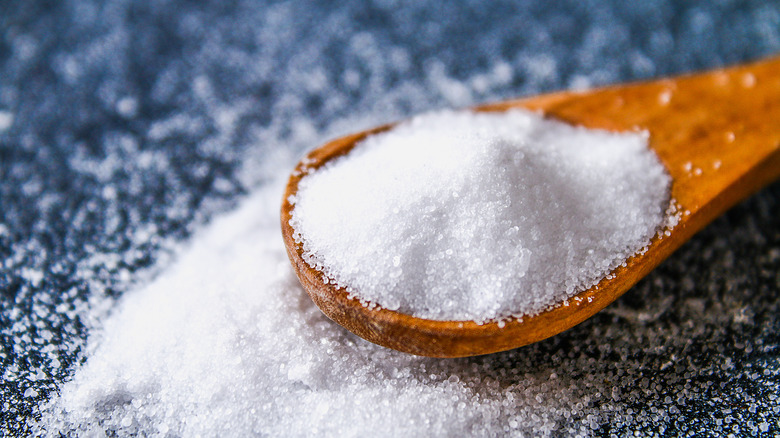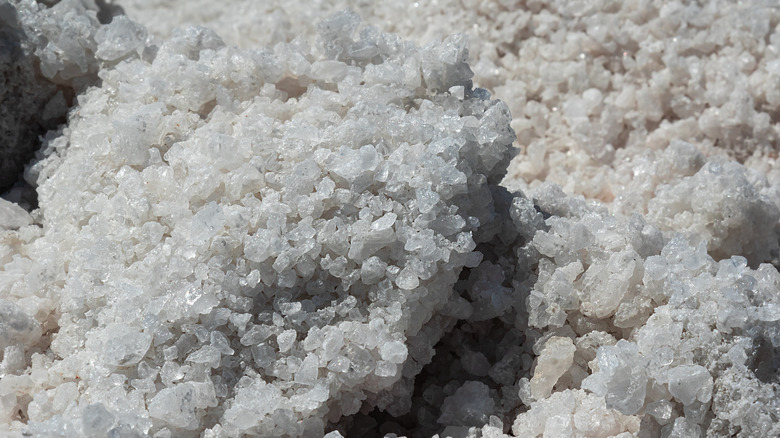The Most Luxurious Finishing Salt For Roasting Veggies
Is there anything more glorious than a tray full of golden, delicately charred, glistening vegetables just out of the oven? In a pinch, roasting vegetables is the perfect, low-effort addition to any meal. The results are a crunchy, charred exterior and a soft, almost caramelized interior. All it takes is your favorite vegetables, oil, and seasoning. Whether it's roasted cauliflower, roasted caramelized carrots, or a simple roasted butternut squash, there's a plethora of delicious veggies to explore.
The most crucial element to perfecting roasted vegetables, or any dish, is balancing the seasoning to fit your taste and allowing each vegetable to shine. If you strive to avoid the misfortune of bland veggies, it's important to be intentional about the seasoning you choose. For most, common salts like kosher or iodized, are enough for standard everyday cooking. But we're not standard everyday people, are we? The key to elevating your favorite roasted vegetables lies in pivoting the way we think about and use salt.
What is finishing salt?
If you've ever wondered why roasted vegetables (or most things for that matter) taste better at restaurants than at home, the answer might lie in the kind of salt used and how it's applied. At its basic level, salt brings out the flavor of ingredients in both savory and sweet recipes. Finishing salts, however, are designed to add a final flourish of texture and flavor to a completed recipe right before serving.
Fleur de sel and Himalayan pink are some of the most recognizable finishing salts, but a plethora of salts are chosen based on texture, taste, and salt content. Many chefs consider flaky sea salt to be a finishing salt to use on food just before sending it out from the kitchen. The most popular applications of finishing salts can be found sprinkled onto cookies, salads, steaks, and more. To elevate roasted vegetables, one stands out above them all.
Try this luxe finishing salt
Add a touch of luxury to roasted vegetables right out of the oven with a sprinkle of sel gris, or gray salt. The sister salt to fleur de sel, sel gris is harvested from the same salt pans as fleur de sel but from the bottom, giving it a higher mineral content and its gray color. Sel gris is flaky and soft with a touch of moisture and offers a slight mineral tang that most sea salts don't offer.
Mark Bitterman, selmelier (salt sommelier) and author of "Salted," tells Food & Wine that with huge, chunky crystals packed with minerals and moisture, sel gris takes longer to dissolve into the food, offering better results and making it an ideal finishing salt. The mild mineral flavor and added crunchy texture offer a lush twist to standard roasted vegetables that you'll want to make over and over again.


